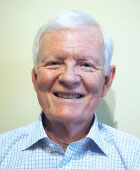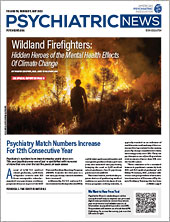When I was a boy and I would see scary things in the news, my mother would say to me, “Look for the helpers. You will always find people who are helping.” To this day, especially in times of “disaster,” I remember my mother’s words and I am always comforted by realizing that there are still so many helpers—so many caring people in this world. —Fred Rodgers, 1993
When Hurricane Katrina hit the Gulf Coast in 2005, I wanted to be a helper. But I wondered how a psychiatrist can be a helper in a disaster. With years of training in progressively more complex and advanced methods of treating varying degrees of mental illness, was I expected to deliver high tech methods of psychiatric care?
The short answer is no. What is required are the basic principles of compassionate, supportive presence to survivors and advocacy/consultation to a team of responders to ensure the safety and recovery from the trauma of a disaster.
I soon discovered that nowhere is this more evident than in the care of children. Children are particularly vulnerable to the impact of disasters due to a lack of experience, skills, and resources to independently meet their mental and behavioral health needs. Additionally, parents’ own distress and coping difficulties to an event may threaten children’s sense of safety and security while serving as a negative model of emotional regulation.
Being a helper for children in these circumstances means providing a compassionate, calming presence while advocating for the re-establishment of regular routines for family and community life.
In my own experience, working in disaster shelters and communities during a recovery period meant ensuring the safety of children by advocating individual identification with their own family to include registration with labeled arm bands in case of separation. (During the evacuation process of Hurricane Katrina, 5,000 children became separated from their families, according to Daniel Broughton, M.D., et al., in the May 2006 Pediatrics.) I also worked with child care agencies to provide day care and recreational activities during the day while parents went to work, kept medical appointments, or met with social service agencies.
Supporting return to school while still living in a shelter was another identified need that might include supporting parents who enroll their child in a different school district due to relocation. Appropriate accommodations in shelters for special needs children include access to specialty devices, for example, noise canceling headphones for children who have autism.
Because of the chaos in shelters, which are overstimulating and dysregulating, children’s daily schedules and routines are disrupted. This dysregulation poses additional risk for relapse and impairment for children who have pre-existing mental health issues. Reviewing psychotropic medication needs with parents and helping with refills, especially stimulants and antidepressants, to prevent relapse and withdrawal from abrupt discontinuation is also essential to their well-being.
Additionally, children who have pre-existing medical conditions such as asthma, which can contribute to their anxiety, need similar support. Teaching deep-breathing techniques for stress reduction is an effective, nonthreatening approach to establish rapport and be a helper with children and families. This is also a mutually beneficial experience to bring a tone of calm to allow more focused conversation about the concerns that children have.
Maladaptive coping behaviors are particularly problematic during disaster response and recovery. Adolescence is a developmental stage during which risky behaviors frequently occur, and the stress around disasters exacerbate these risks. Substance use (alcohol and illicit drugs) and sexual activities are often occurring in these circumstances.
Providing supervised activities that involve assigning adolescents to organize games for the shelter or co-lead a recreational activity helps model healthy roles for other adolescents while also giving adolescents an opportunity to contribute to the well-being of others.
These are a few of the ways that I found I could be a helper for children and their families in the immediate aftermath of a disaster. Be part of an official disaster response agency such as the American Red Cross and know the local mental health agencies where referrals can be made for those children needing follow-up care. Taking the course “
Psychological First Aid and Skills for Psychological Recovery” will go a long way toward helping you be prepared for that occasion when you too want to be a helper. ■

